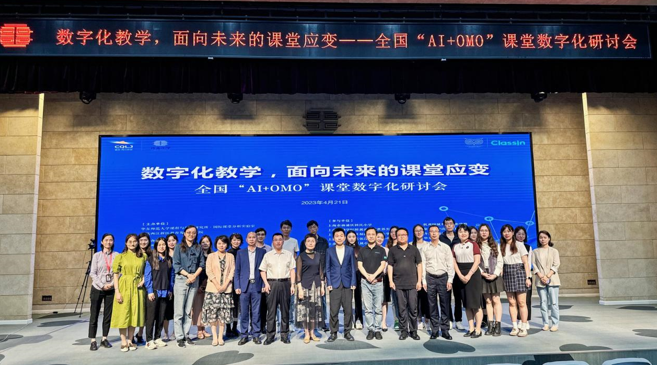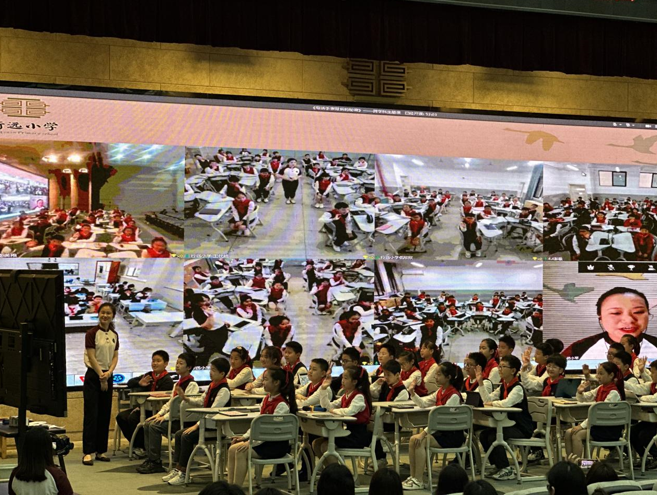 Bridging News
Bridging News
Discussing China's AI, OMO Digitization of the Classroom in Chongqing
Chongqing - The rise of technology in education is a global trend in today’s classroom. Recently, the symposium on China’s digitization of the classroom by combing artificial intelligence (AI) and online-merge-offline (OMO) kicked off at Xingyuan Primary School in Chongqing Liangjiang New Area. Over 300 experts and scholars gathered to explore how to develop high-quality classroom digitization.
The symposium is organized both online and offline, attracting over 30,000 people watching online.

The symposium on China’s AI + OMO classroom digitization was held in Chongqing Liangjiang New Area. (Photo/Xingyuan Primary School)
Under the theme “Digitized Teaching: The Future of the Classroom,” the symposium includes class demonstrations, expert commentary, and keynote speeches. Participants discuss AI and OMO education, combining the best aspects of online and in-person learning.
“Through this digital symposium, we aim to reveal new class models, realize the integration of superior resources, construct a new ecosystem for intelligent education, and ensure that thousands of households benefit from these advancements,” said Zeng Wanxue, the dean of Chongqing Liangjiang New Area Education Development Institute. The event represents an exploration of intelligence and an upgrade for Xingyuan Primary School in its pursuit of intelligent education.
According to Zhao Guixia, the principal of Dandelion Education Think Tank League School, the classroom is the key factor in promoting the digital transformation of education. The digitization of classrooms enables the diversification of learning resources and achievements. “Let us get closer to the digitization of the classroom, feel its charm, and explore the new future,” she said at the symposium.

Xingyuan Primary School presents an OMO lesson at the symposium. (Photo/Xingyuan Primary School)
During the symposium, teachers and students from seven schools nationwide presented eight lessons covering subjects such as Chinese, mathematics, English, art, and the rule of law. The interdisciplinary blend of multiple lesson types and the use of digital platforms showcased the power of innovative teaching demonstrations.
Notably, Xingyuan Primary School exhibited its rule of law class using OMO. The school connected the lesson to the social and legal fields by incorporating case videos, expanding the class to encompass multiple perspectives and scenarios. This approach further emphasized the essence of law teaching.
“There is an excellent synergy between course design and applicable technology, reflecting the high quality of the teachers,” commented Zhong Weidi, the vice director of Chongqing Education Information Technology and Equipment Center, on the class demonstration. “The purpose of promoting intelligent education is not to showcase technology but to help our students grow,” added Liu Yalin, the vice dean of Chongqing Academy of Education Science.
Moreover, experts from various institutes and schools delivered keynote speeches on the digitization of education, discussing the digital transformation of education and classroom innovation in the digital age.
 Related Stories
Related Stories